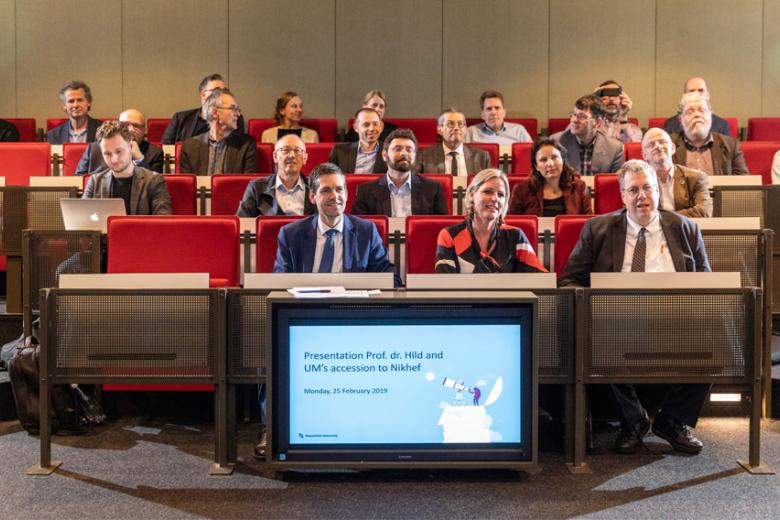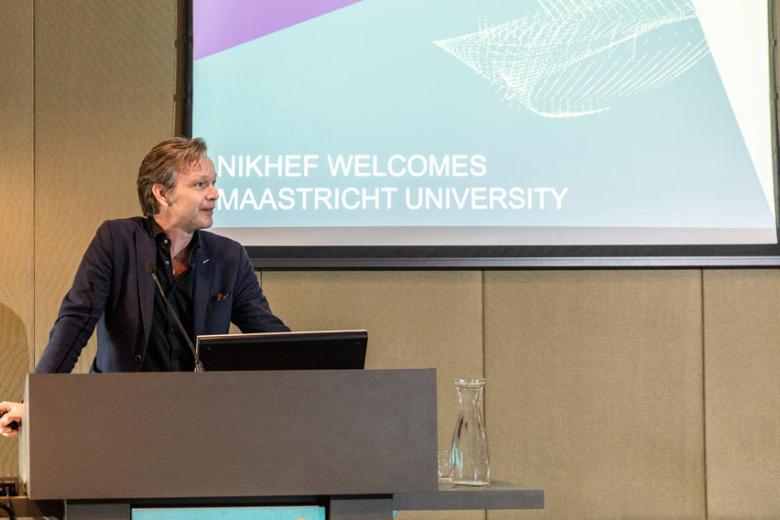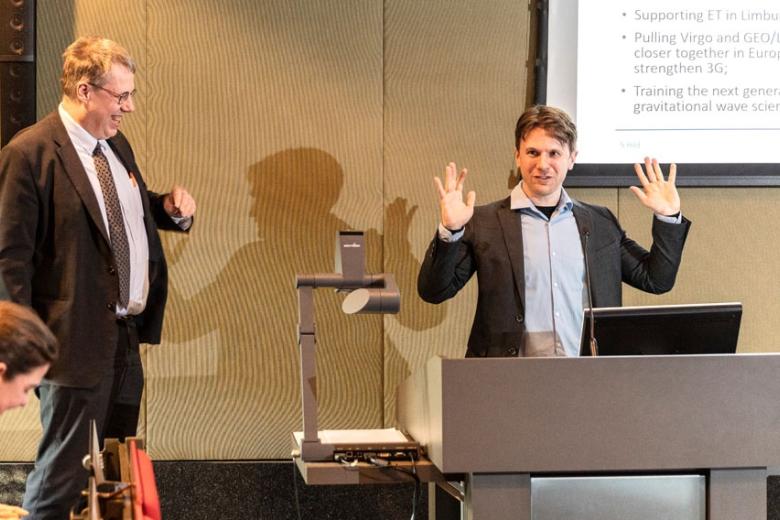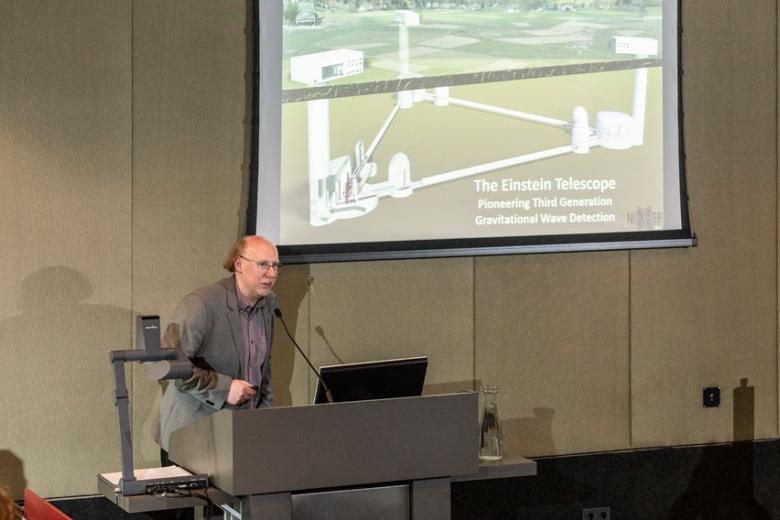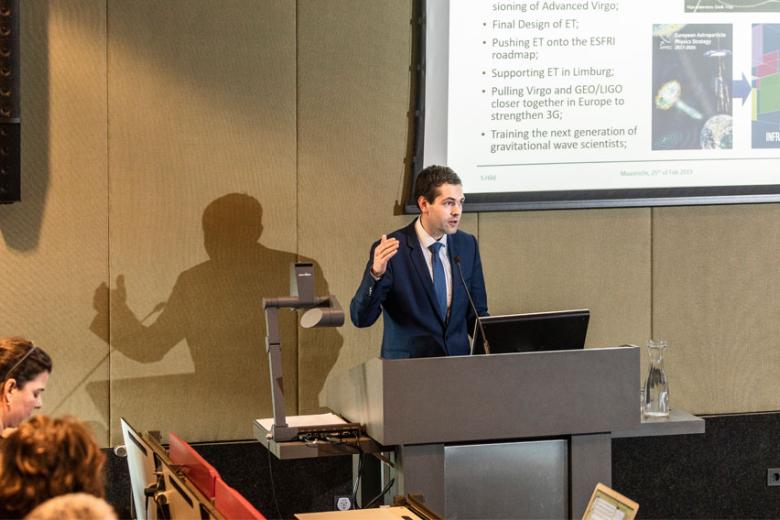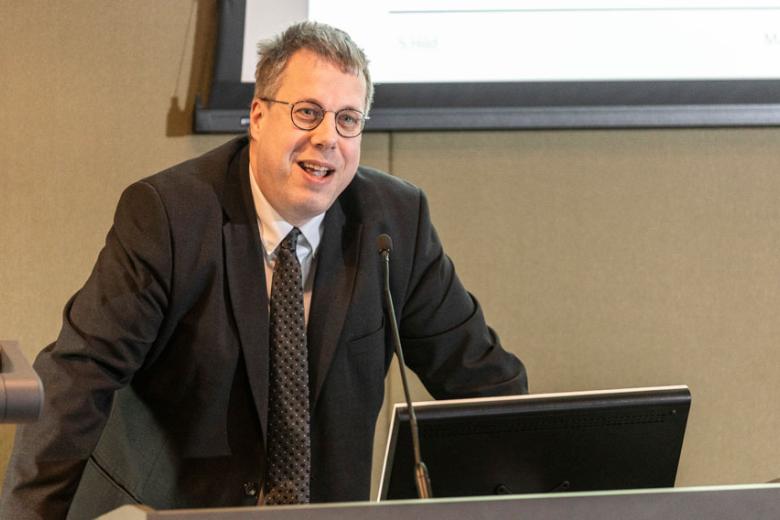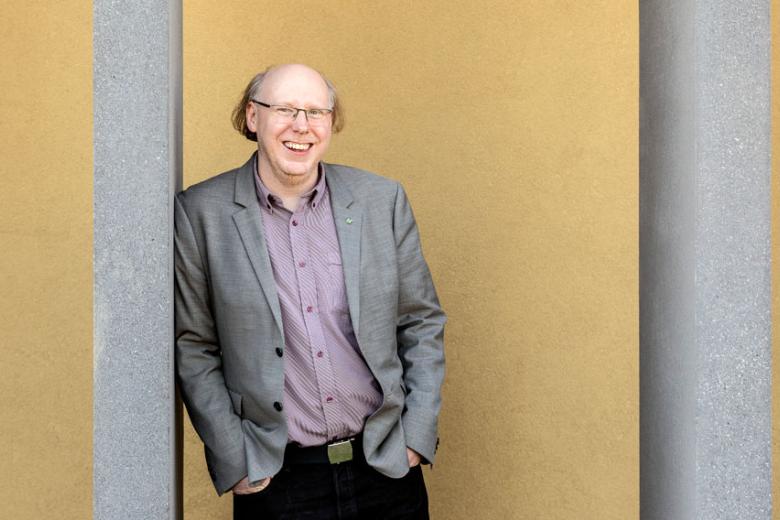Stefan Hild appointed professor of Gravitational Research; UM joins Nikhef
Maastricht University (UM) has appointed Prof. dr. Stefan Hild as professor of Gravitational Research. The move paves the way for UM to become a full member of the National Institute for Subatomic Physics (Nikhef).
The appointment of Prof. dr. Stefan Hild serves to strengthen particle physics research within the Faculty of Science and Engineering. This is in line with UM's ambition to further develop its education and research in science and technology. As a member of the national gravitational wave programme, professor Hild will attract internationally leading academics to the Fundamental Physics research group.
International specialist
Born in Celle, Germany in 1978, Hild is currently professor of Experimental Physics at the University of Glasgow. He will take up his new position at UM on 1 August 2019. Hild is known internationally as a specialist in the design and construction of ultra-sensitive lasers for measuring vibrations of spacetime as predicted by Einstein’s 1915 theory of relativity.
ET Pathfinder and Einstein Telescope
In Maastricht, professor Hild will help build the ET Pathfinder, a test centre where new ideas for instruments for measuring gravitational waves can be tested and developed. The ET Pathfinder is a prototype of the Einstein Telescope: a deep-cooled, triangular underground laser detector ten kilometres in length, which in theory will be able to explore the universe as far back as the Big Bang. This new science and associated innovations are of great importance for students and researchers as well as entrepreneurs and institutions in the (Eu)region.

Accession to Nikhef
With the appointment of professor Hild, UM will join the nationwide collaboration Nikhef. With this, Maastricht joins a productive cooperation in the field of (astro) particle physics of the NWO Institutes Organisation, Radboud University, the University of Groningen, Utrecht University, the University of Amsterdam and Vrije Universiteit Amsterdam.
Prof. dr. Martin Paul, President of UM, is excited about the opportunities that come with the accession to Nikhef: “In recent years, Maastricht University has been working on the successful development of science and technology education and research. The development of the Fundamental Physics research group is part of this. The accession to Nikhef will give a boost to cooperation in the field of (astro) particle physics and offers our researchers and students even better access to the international network and facilities.”
Maastricht is becoming the innovation centre for measuring gravitational waves.
Prof. Stefan Hild
Photo impression
Also read
-
Mental health services urgently need to address lifestyle
Mental health services need to increase investment in lifestyle interventions to improve care and narrow the 15-year life-expectancy gap for people with mental health conditions, according to a new report by The Lancet Psychiatry Commission . Maastricht University scientist Jeroen Deenik is one of the...
-
Study Smart gets Dutch Education Premium
Maastricht University's (UM) interfaculty educational innovation project Study Smart is one of the three winners of the Dutch Education Premium 2025. This was announced on Tuesday during the Comenius festival in The Hague.
-
Most prestigious European grant to two UM scientists
Two Maastricht University professors are to receive the most prestigious European research grant for individual researchers: an ERC Advanced Grant, worth over €2.5 million. They are Lorenzo Moroni (MERLN) and Alexander Sack (FPN).
